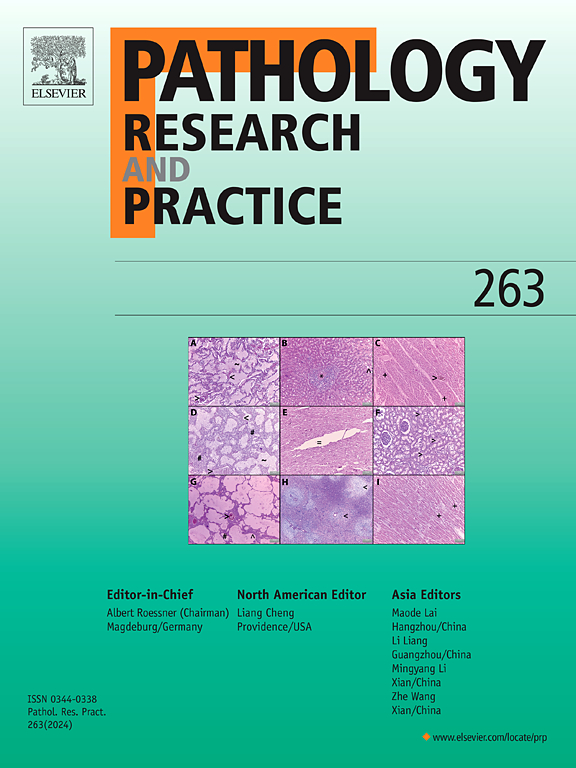Exosomal microRNAs in cancer metastasis: A bridge between tumor micro and macroenvironment
IF 2.9
4区 医学
Q2 PATHOLOGY
引用次数: 0
Abstract
Malignant tumors are complicated structures of cancer cells that are constantly in communication with their local and distant environment. Exosomes are released by tumor cells and can facilitate the cell-cell interaction within the local microenvironment and the primary tumor. In fact, exosomes are secreted by both tumor and non-tumor cells, to provide a mutual communication network between cells and their micro- and/or macro-environments. Exososmes can contain a variety of biological cargos mostly based on their originated cells. Uptake of these exosomes by their recipient cells results in the alterations that their cargo can exert. MicroRNAs are identified as one of the most critical exosomal components, considering their pivotal regulatory roles in distinct biological process, including metastasis. Release and absorbance of exosomal microRNAs is possible by various cells within the host, and can have distinct biological consequences. Therefore, in this review we will discuss the role of exosomal microRNAs derived from tumor cells and untransformed cells within their micro- and macroenvironment in cancer progression and metastasis.
癌症转移中的外泌体 microRNA:肿瘤微环境与大环境之间的桥梁
恶性肿瘤是由癌细胞组成的复杂结构,癌细胞不断与局部和远处的环境进行交流。外泌体由肿瘤细胞释放,可促进局部微环境和原发肿瘤内的细胞间相互作用。事实上,肿瘤细胞和非肿瘤细胞都会分泌外泌体,为细胞与其微环境和/或大环境之间提供一个相互交流的网络。外泌体可含有多种生物载体,主要取决于其来源细胞。这些外泌体被受体细胞吸收后,其载体会发生改变。微RNA被认为是外泌体中最重要的成分之一,因为它们在不同的生物过程(包括转移)中发挥着关键的调控作用。宿主体内的各种细胞都有可能释放和吸收外泌体 microRNA,并可能产生不同的生物学后果。因此,在本综述中,我们将讨论来自肿瘤细胞和未转化细胞的微环境和大环境中的外泌体 microRNA 在癌症进展和转移中的作用。
本文章由计算机程序翻译,如有差异,请以英文原文为准。
求助全文
约1分钟内获得全文
求助全文
来源期刊
CiteScore
5.00
自引率
3.60%
发文量
405
审稿时长
24 days
期刊介绍:
Pathology, Research and Practice provides accessible coverage of the most recent developments across the entire field of pathology: Reviews focus on recent progress in pathology, while Comments look at interesting current problems and at hypotheses for future developments in pathology. Original Papers present novel findings on all aspects of general, anatomic and molecular pathology. Rapid Communications inform readers on preliminary findings that may be relevant for further studies and need to be communicated quickly. Teaching Cases look at new aspects or special diagnostic problems of diseases and at case reports relevant for the pathologist''s practice.

 求助内容:
求助内容: 应助结果提醒方式:
应助结果提醒方式:


